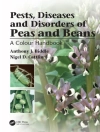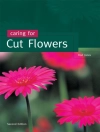Mulberry (Morus spp.) is widely distributed tree taxon found almost in every continent across the globe. Habitat of this plant species is very much diversified, as it is found across all climatic zones ranging from tropical, sub-tropical, temperate, tundra, semi-arid to desert (arid) conditions. It flourishes on all types of landforms; mountains, valleys, plateaus, forests, grasslands, hills, plains and arid lands.
Successful utilization of mulberry leaf for silkworm rearing and production of quality cocoons has been studied at length. Now, mulberry is being recognized as a multipurpose plant by most of the countries across the globe. As mulberry is eco-friendly in nature, the propagation of mulberry needs to be done at large scale to address the ecological issues like conversion of arid lands to cultivable lands, eco-restoration of degraded lands, bioremediation of polluted land sites, conservation of water and soil, cleaning the air pollution in urban areas, utilization of mulberry in producing renewable energy in the form of biodiesel. Similarly, there is the need to produce the identified and highly commercially valued pharmaceutical compounds of mulberry under laboratory conditions throughin vitro culture based secondary metabolite production through enhanced expression under the stress conditions or in presence of elicitors.
Lately protocols have been developed for genetic transformation of mulberry through agrobacterium mediated and particle bombardment mediated gene transfer techniques. Biotechnology based molecular breeding techniques could also be utilized in raising the improved lines through marker assisted selection, soma clonal variations, mutational breeding, somatic hybridization, genome editing and other genetic engineering approaches. Apart from sericulture; mulberry should also be utilized and exploited in other sectors across the globe for additional revenue generation, for livestock maintenance, for environmental safety and in promoting human health.
These diversified aspects of mulberry coupled with its economic importance in revenue generation through sericulture, animal husbandry and industrial products has prompted us to prepare this book. It will present a comprehensive account of mulberry plant under 9 chapter headings: introduction, botanical features, ecological features, ecophysiological aspects, interactions and development, molecular aspects, propagation and production, economic importance, and global perspectives as well as future approaches.
Table des matières
Chapter 1: Introduction.- Chapter 2: Botany.- Chapter 3: Ecological and Ecophysicological Aspects.- Chapter 4: Mulberry – Mycorrhizal Interactions and Development Related to Other Organisms.- Chapter 5: Molecular Aspects of Mulberry.- Chapter 6: Propagation of Mulberry and Production.- Chapter 7: Phytochemical Constituents, Pharmacological Activities and Human Health.- Chapter 8: Economic Importance.- Chapter 9: Global Perspectives and Future Approaches.
A propos de l’auteur
Munir Ozturk, Ph D, DSc, has served at Ege University Izmir, Turkiye, for 50 years in various positions. He has received fellowships from the Alexander von Humboldt Foundation, the Japanese Society for Promotion of Science, and the National Science Foundation (USA). Dr. Ozturk has served as Chairman of the Botany Department and Founding Director of the Centre for Environmental Studies at Ege University, Izmir, Turkiye. He was also a Consultant Fellow at the Faculty of Forestry at Universiti Putra Malaysia, Malaysia, and a Distinguished Visiting Scientist at the International Center for Chemical and Biological Sciences (ICCBS) at Karachi University, Pakistan. His fields of scientific interest are plant ecophysiology, medicinal and aromatic plants, conservation of plant diversity, biosaline agriculture and crops, pollution, and biomonitoring. He has published 55 books, 85 book chapters, and 200 papers in journals with significant impact factors. Dr. Ozturk holds Ph D and DSc degrees from Ege University, Turkiye.
Dr. Azra N. Kamili (Ph D) is currently Professor (Adjunct) of Botany at Central University of Kashmir. Earlier she was Professor of Botany at Center of Research for Development (CORD), University of Kashmir Srinagar, Jammu and Kashmir, also served as Director CORD, University of Kashmir and founder member -Head Department of Environmental Sciences, University of Kashmir. She has completed her M. Phil and Ph.D. in Botany from the University of Kashmir and has significantly contributed in various fields of Botany. Presently her research interests focus on Plant Tissue Culture, Microbial Ecology, Stress Biology, Plant Microbe Interaction and Molecular Biology. She has teaching and research experience of nearly 40 years. She has attended several National/ International conferences, has guided over 60 M. Phil and Ph.D scholars. Dr. Kamili has remained the Principal investigator /co-principal investigator/mentor of 16 major research projects, has published 9 books and 212 research publications in reputed Journals. She has served as a member of J&K Biodiversity Board, Academic council and Syndicate at University of Kashmir, Academic Council at SKUAST-K and Senate at NIT, Srinagar.
Volkan Altay, Ph D, DSc, is a Full Professor in the Biology Department, Faculty of Science and Arts, at Hatay Mustafa Kemal University, Turkiye. His fields of interest are plant ecology, vegetation ecology, taxonomy, biodiversity, biomonitoring and pollution ecology, and sustainable use of medicinal plant resources. He holds a proven track record of nearly 100 publications in highly reputed Professional journals. He has also published seven books, nearly 50 research articles in impact factor journals, more than 45 book chapters and reviews, and more than 70 international and national congress reports. He received his Ph D in 2009.
Dr. Gulab Khan Rohela (Ph D) has completed his MSc and Ph D in Biotechnology from Kakatiya University, Warangal, Telangana, India; has 2 years of experience as an Assistant Professor (C) in Kakatiya University and 8 years as a Scientist in Central Silk Board, India. Presently he is working as a Scientist at Central Sericultural Research and Training Institute, Central Silk Board, Pampore (J&K), India. Dr. Rohela has published 15 book chapters and 40 research papers in reputed international journals with cumulative impact factor of 68.86. His research interests are in the field of Plant Biotechnology with major focus on Somatic Hybridization and “In vitro Mutational Breeding in Mulberry”. Through somatic hybridization (in collaboration with University of Kashmir) he has successfully raised somatic hybrids of mulberry. He is a “Gold Medalist” in B.Sc. Biological Sciences, has been awarded prestigious “Jawaharlal Nehru Fellowship” and “Maulana Azad National Fellowship”; nominated for “Commonwealth Split-Site Doctoral Fellowship 2011-2012in UK” by University Grants Commission, New Delhi. He has qualified GATE and different Assistant Professor eligibility tests of CSIR-JRF (NET), ICAR-NET, AP SET, MH SET, JK SET and TS SET.












